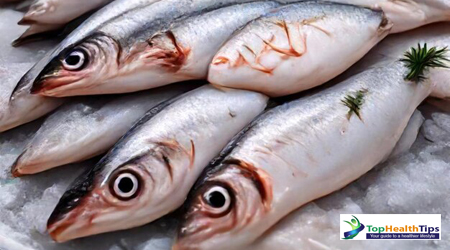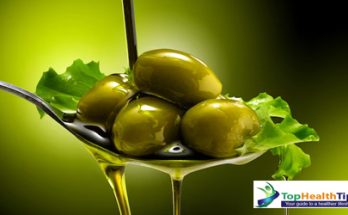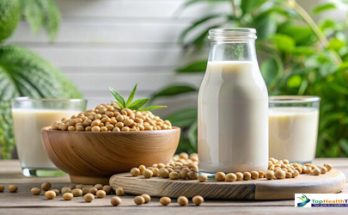Pangasius fish, often referred to as basa, tra, or swai, is a popular white fish known for its mild taste and affordability. Originating primarily from the Mekong Delta in Vietnam, Pangasius is farmed on a large scale and exported worldwide. Its rise in popularity can be attributed to its sustainability and its role as a cost-effective source of high-quality protein. This article will explore the nutritional benefits, sustainability factors, and reasons to include Pangasius in your diet.
What Is Pangasius Fish?
Pangasius fish belong to the catfish family and are predominantly farmed in freshwater environments. They are known for their:
- Mild Flavor: Pangasius has a light, neutral taste, making it versatile for various recipes.
- White Flesh: The meat is soft, flaky, and low in fat.
- Affordability: Compared to other white fish like cod or haddock, Pangasius is more budget-friendly.
Nutritional Value of Pangasius Fish
Pangasius provides a nutritious and balanced profile that benefits overall health. Key nutritional components include:
- High-Quality Protein: Pangasius is rich in protein, crucial for muscle repair and growth.
- Low in Fat: It is naturally low in fat, making it an ideal option for those looking to manage cholesterol or calorie intake.
- Omega-3 Fatty Acids: Though not as rich as fatty fish like salmon, Pangasius contains moderate levels of heart-healthy omega-3s.
- Minerals and Vitamins: It is a good source of essential nutrients like vitamin B12, potassium, and selenium, which contribute to various bodily functions.
Here’s a nutritional chart for Pangasius Fish (per 100g serving) based on USDA data:
| Nutrient | Amount per 100g | % Daily Value |
|---|---|---|
| Calories | 100 kcal | 5% |
| Protein | 17.0 g | 34% |
| Total Fat | 2.9 g | 4% |
| – Saturated Fat | 1.0 g | 5% |
| – Polyunsaturated Fat | 0.7 g | — |
| – Monounsaturated Fat | 1.2 g | — |
| Cholesterol | 45 mg | 15% |
| Sodium | 50 mg | 2% |
| Potassium | 320 mg | 9% |
| Carbohydrates | 0 g | 0% |
| – Fiber | 0 g | 0% |
| – Sugars | 0 g | 0% |
| Vitamin B12 | 2.4 µg | 40% |
| Vitamin D | 4.1 µg | 21% |
| Selenium | 10.2 µg | 18% |
| Iron | 0.5 mg | 3% |
| Calcium | 15 mg | 1% |
| Magnesium | 25 mg | 6% |
Note: The percentages are based on a 2,000-calorie daily intake.
Why Choose Pangasius?
Here’s why Pangasius stands out as an ideal seafood choice:
- Affordable Protein: It’s one of the most budget-friendly fish options, accessible to a wide range of consumers.
- Mild Taste: The mild flavor appeals to many palates, especially those who are not fond of strong-tasting fish.
- Easy to Cook: Pangasius can be grilled, baked, or pan-fried, offering flexibility in meal preparation.
Sustainability of Pangasius Fish Farming
Sustainability is a crucial factor when considering seafood choices, and Pangasius farming has made significant progress toward environmentally responsible practices.
- Efficient Farming: Pangasius farming requires less feed than other fish species, making it more efficient in terms of resource use.
- Low Carbon Footprint: Compared to beef or pork, farming Pangasius emits fewer greenhouse gases, making it an eco-friendly protein source.
- Aquaculture Certifications: Many Pangasius farms are certified by organizations like the Aquaculture Stewardship Council (ASC) and GlobalG.A.P, ensuring adherence to sustainable practices and reduced environmental impact.
Interactive Element:
Consumers can easily check if the Pangasius they buy is sustainably farmed by looking for certification logos on packaging. These labels ensure the fish is sourced from environmentally responsible farms.

Health Benefits of Pangasius
Pangasius offers several health benefits that make it an excellent choice for regular consumption:
- Heart Health: The omega-3 fatty acids in Pangasius help lower triglyceride levels, reduce inflammation, and promote heart health.
- Weight Management: Being low in calories and fat, it fits well into a weight-loss or calorie-controlled diet.
- Bone Health: Its high vitamin D and phosphorus content supports strong bones and prevents conditions like osteoporosis.
Pangasius vs. Other White Fish:
Compared to more expensive white fish like cod or haddock, Pangasius offers similar health benefits at a fraction of the price.
Potential Risks and Safety Concerns
While Pangasius is generally safe to consume, some concerns have arisen regarding its farming practices, especially in countries with less stringent regulations. However, with proper certifications and monitoring, these risks can be minimized.
- Mercury Levels: Like most fish, Pangasius contains trace amounts of mercury, but it is generally considered low-risk.
- Contaminant Testing: Reputable sources ensure that Pangasius meets safety standards for contaminants like antibiotics and heavy metals.
How to Cook Pangasius
Pangasius fish is incredibly versatile in the kitchen. Its neutral flavor makes it ideal for a wide range of cooking methods and dishes. Here are a few simple ways to prepare Pangasius:
- Grilled Pangasius: Brush the fish with olive oil, sprinkle with herbs, and grill for 5-7 minutes on each side for a light, healthy meal.
- Baked Pangasius: Coat with breadcrumbs and bake in the oven at 350°F (175°C) for 15-20 minutes.
- Pan-Seared Pangasius: Heat a little butter in a pan and sear the fish on medium-high heat for a quick and delicious meal.
Cooking Tip:
For an extra boost of flavor, marinate Pangasius in lemon juice and garlic before cooking.
Is Pangasius Safe to Eat Frequently?
Consuming Pangasius as part of a balanced diet is generally safe. However, it’s always recommended to diversify fish choices to minimize potential risks associated with contaminants found in seafood. Certified farms offer a higher level of safety by following stringent environmental and health protocols.
Pangasius and Environmental Impact
Compared to other protein sources, Pangasius has a lower environmental impact. Its farming methods use less feed and produce lower emissions than land-based livestock farming.
- Efficient Use of Resources: Pangasius farming is water-efficient and requires less feed, reducing the overall environmental burden.
- Reduced Waste: Advanced farming techniques ensure that waste products are minimized and managed effectively.
Did You Know?
Pangasius farming uses advanced aquaculture techniques, where the water is recycled and treated, minimizing water pollution.
Conclusion: Why Pangasius is a Smart Choice
Pangasius fish offers a sustainable, affordable, and nutritious option for consumers looking for a healthy protein source. Its low environmental impact, coupled with health benefits such as heart support and muscle repair, makes it an excellent addition to any diet.
Key Takeaways:
- Affordable protein with a low-fat, high-nutrient profile.
- Sustainable farming practices that help reduce environmental impact.
- Versatile cooking options suitable for various cuisines.
- Health benefits ranging from improved heart health to weight management.
By choosing responsibly sourced Pangasius, consumers can enjoy the health benefits of seafood while supporting sustainable aquaculture practices.
Related posts for Nutrition & Food>>>
References
- Boyd, C. E., & Tucker, C. S. (2019). Pond Aquaculture Water Quality Management. Springer.
- Naylor, R. L., et al. (2021). “Sustainability in Global Aquaculture”. Nature.
- Mo, W. Y., et al. (2018). “Aquaculture and the Environment: A Review of Pangasius Farming”. Aquaculture Journal.
- Food and Agriculture Organization (FAO). (2020). The State of World Fisheries and Aquaculture.
- U.S. Department of Agriculture (USDA). “Pangasius Nutritional Data.” National Nutrient Database.




